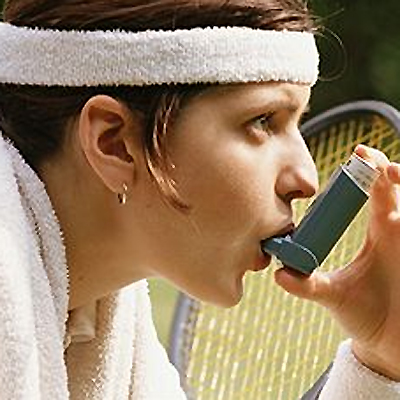
Exercise-induced asthma is a condition which troubles many people around the world. It is defined as bouts of wheezing and breathlessness that one experiences, when he or she is involved in strenuous exercises. But it is seen that a good percentage of people are unaware of the fact that they suffer from this condition. Exercise-induced asthma often causes one to exhibit symptoms like incessant coughing and shortness of breath after a long workout. These symptoms are usually mistaken by the common man as signs of exertion and tiredness. As a result of this, exercise-induced asthma usually goes unnoticed, until the condition worsens to pave way for further complications.
Relation between exercise and asthma
The occurrence of exercise-induced asthma is found to be directly related to the airway reactivity of a person. The airways in your respiratory system are said to be reactive, if they tend to constrict under certain circumstances. This can be brought about by conditions like cold and exposure to allergens. At times overexerting yourself can also lead to the narrowing of the air passages, thereby leading to the development of exercise-induced asthma. Here the lining of the air passages can get inflamed and there will also be excessive mucus production.
Risk factors
It is seen that children are usually more affected by exercise-induced asthma, than elders. This is due to the fact that they tend to be more physically active than adults. Adults who involve in aerobic exercises are more prone to contract this condition, than their counterparts who involve in strength training and other anaerobic forms of exercises. However, even though aerobic in nature, swimming is one form of exercise which does not contribute towards the development of exercise-induced asthma. This can be attributed to the high humid conditions of water, which will in turn prevent the constriction of your air passages.
Difference between regular asthma and exercise-induced asthma
Studies conducted around the world have shown that more number of people suffer from regular asthma than exercise-induced asthma. However, people suffering from both the above said types of asthma, exhibit almost the similar kinds of symptoms. But while the symptoms of regular asthma lasts for a long period of time, the symptoms of exercise-induced asthma are usually short lived. These two kinds of asthma also differ in their causative agents. While regular asthma is usually allergy-induced, exercise-induced asthma is caused due to the narrowing of air passages due to overexertion.
Treatment methods
The treatment followed for exercise-induced asthma will vary with the intensity of the disease. Listed below are some methods which are commonly used to deal with the condition of exercise-induced asthma.
1. Short acting inhaled bronchodilators like albuterol and pirbuterol can be used 15 minutes before starting the exercise, in order to prevent the symptoms of asthma from popping up for about 4 to 5 hours.
2. Using a mast cell stabilizer 15 to 60 minutes before the exercise regime, will also help in giving a short-term relief from the symptoms of exercise-induced asthma.
3. If you want to obtain relief from the asthma symptoms for a longer period, then you should use long-acting inhaled bronchodilators like salmeterol and formoterol, half an hour before you start your exercise routine. This will help to ward off the asthma symptoms for up to 12 hours.
4. For obtaining a 24-hour relief from asthma symptoms, you should use leukotriene modifiers, which are drugs that act by reducing the inflammation in the air passages.
5. If the condition of exercise-induced asthma is accompanied by wheezing and allergic reactions, then your physician will prescribe a daily dose of corticosteroid inhalers like triamcinolone and fluticasone to tackle the condition. Along with this, you may also need to have a daily dosage of long-acting bronchodilators.
Guidelines for self-care
To prevent the occurrence of exercise-induced asthma, you can take some necessary precautions.
Always see to it that you perform warm ups before starting off with the main exercise routine. Also avoid exercising outdoors, in case the climatic conditions are unfavorable. You should avoid contracting respiratory infections and should not exercise, in case you have a cold. Exercising next to a water body will help in maintaining a humid environment and will thereby reduce the occurrence of asthma symptoms. It is also recommended that you breathe through pursed lips while exercising. Also, do avoid exposure to allergens and always wear a mask while exercising.
Quit exercising, even if you notice very mild symptoms of exercise-induced asthma during the workout. If the symptoms worsen, then pause and administer the medication given to you by the doctor. If your condition does not get better even after taking medicines, then do stop exercising immediately.
Thus, by following the above said methods, you can very well deal with the condition of exercise-induced asthma.




